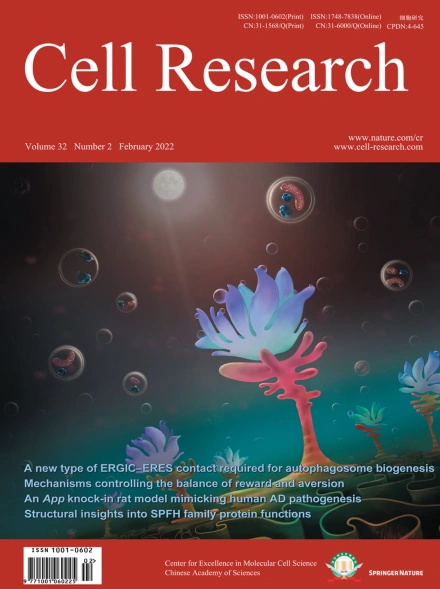
Advanced Search
Submit Manuscript
Advanced Search
Submit Manuscript
Volume 32, No 2, Feb 2022
ISSN: 1001-0602
EISSN: 1748-7838 2018
impact factor 17.848*
(Clarivate Analytics, 2019)
Volume 32 Issue 2, February 2022: 157-175 |
An App knock-in rat model for Alzheimer’s disease exhibiting Aβ and tau pathologies, neuronal death and cognitive impairments
Keliang Pang1,2,3 , Richeng Jiang4,5 , Wei Zhang6 , Zhengyi Yang7 , Lin-Lin Li8 , Makoto Shimozawa4 , Simone Tambaro4 , Johanna Mayer4 , Baogui Zhang7 , Man Li6 , Jiesi Wang6 , Hang Liu1,2,3 , Ailing Yang1 , Xi Chen8 , Jiazheng Liu8 , Bengt Winblad4,9 , Hua Han8 , Tianzi Jiang7 , Weiwen Wang6 , Per Nilsson4 , Wei Guo1,2,3,* , Bai Lu1,2,3,*
1School of Pharmaceutical Sciences, IDG/McGovern Institute for Brain Research, Tsinghua University-Peking University Joint Center for Life Sciences, Tsinghua University, Beijing, ChinaA major obstacle in Alzheimer’s disease (AD) research is the lack of predictive and translatable animal models that reflect disease progression and drug efficacy. Transgenic mice overexpressing amyloid precursor protein (App) gene manifest non-physiological and ectopic expression of APP and its fragments in the brain, which is not observed in AD patients. The App knock-in mice circumvented some of these problems, but they do not exhibit tau pathology and neuronal death. We have generated a rat model, with three familiar App mutations and humanized Aβ sequence knocked into the rat App gene. Without altering the levels of full-length APP and other APP fragments, this model exhibits pathologies and disease progression resembling those in human patients: deposit of Aβ plaques in relevant brain regions, microglia activation and gliosis, progressive synaptic degeneration and AD-relevant cognitive deficits. Interestingly, we have observed tau pathology, neuronal apoptosis and necroptosis and brain atrophy, phenotypes rarely seen in other APP models. This App knock-in rat model may serve as a useful tool for AD research, identifying new drug targets and biomarkers, and testing therapeutics.
https://doi.org/10.1038/s41422-021-00582-x